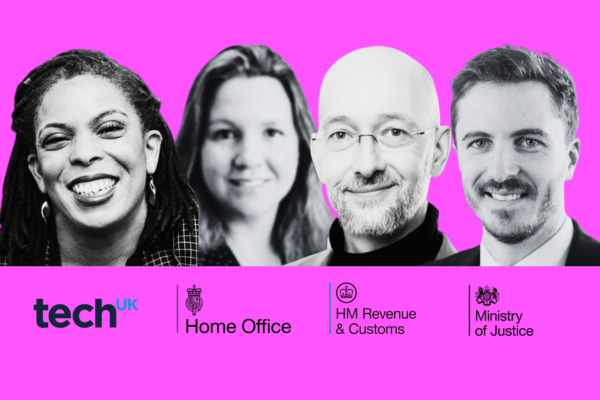Accenture's Global Public Service Lead on transformation trends for 2024
With the emergence of new and rapidly maturing technologies, changing citizen expectations and a desire to reshape public services to optimise digital operation, 2024 promises to be a “busy year” for governments globally, according to Anita Puri, who leads Accenture’s public sector work around the world. 
In her more than 25 years at Accenture, Puri has worked across the broad spectrum of public services, overseeing many of the large-scale transformation programmes of US Federal Agencies and their international counterparts.
From this global vantage point, she shares the trends and pressures likely to make a significant impact in government transformation outcomes in 2024 - and how to prepare for them.
Taking a step back
There's a lot of disruption coming from the emergence of new technologies, which has led to increasing interest from governments in driving continuous improvement to their services and operations. Over the next twelve months, I expect to see an even larger focus on government agencies building out their digital core – looking at cloud data, security and AI together.
As a result, we're spending more time with our public sector clients taking a step back and looking at what their vision is, ensuring that with everything happening right now they’re still aligned in the right way. There is a focus on reimagining the way public services are provided and a pivot towards outcomes, which is setting the context for where the next stages of transformation will be.
Getting comfortable with Gen AI
I would be remiss if I didn't say a huge development for those of us in the public sector over the last twelve months has been the emergence of Generative AI. The change I’m seeing now is the readiness of government organisations to engage with this technology.
This is different from emerging technologies that have come before in terms of the transformational impact it’s having and there’s a catch-up needed from a technological standpoint that must be done, e.g migrating into the Cloud and data readiness.
Government entities have a unique role in the AI journey as both a user, a regulator and a service provider. But collaboration and leadership will be central to how this technology plays out over the coming year.
Collaborative tech ecosystems
Embracing partnerships with technology, industry and local experts will become increasingly critical for public sector organisations to navigate this period of rapid technological change. A lot of lines are bleeding right now so being able to share ideas about new technology, especially in these incubation stages, is really important.
As more public sector organisations move to the Cloud, they'll be able to collaborate even more from a technology and innovation standpoint. The more that public and private sector organisations are engaging at the same level, the more they can benefit from idea exchanges and information exchanges!
Tapping into new sources of talent
Governments around the world are facing a war for talent, and with vacancies across government, we see Gen AI emerging as a valuable tool to help manage workloads, drive efficiencies and improve citizen services. . In 2024, this will require organisations to recalibrate, particularly in areas such as upskilling and tapping into new sources of talent; hiring from previously unexplored pools of candidates.
Developing a more adaptable and resilient public sector workforce – one that can keep pace with technological change – will become increasingly important. As a result, there will likely be more of a focus on strategies that drive continuous learning. Micro-skilling, for example, has emerged as a popular strategy in some parts of the world – a bite-sized, targeted approach to learning development.
Nurturing and engaging with the existing workforce through continuous learning will also help to thaw the public sector’s frozen middle. This refers to the role that middle managers play in halting organisational progress, and can occur when they don’t have the skill or the ability to move beyond their current position.
No shortage of opportunities
There's so much to be excited about and there’s no shortage of opportunities. Pressures and disruptions caused by constrained resources, political uncertainties and growing public demands, provide an opportunity for digital and technology-enabled change.
It has given the public sector an opportunity to think about doing things in new and different ways. We are starting to see governments pivot from this learning and piloting stage to keen interest in doing innovative things on a much broader scale.






